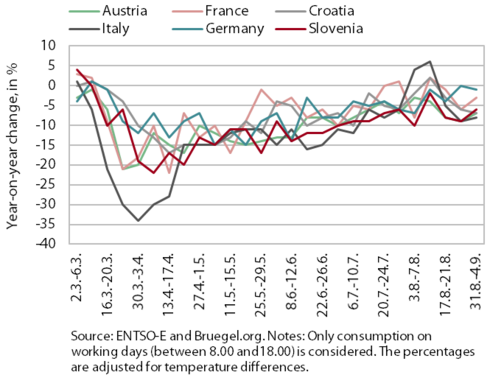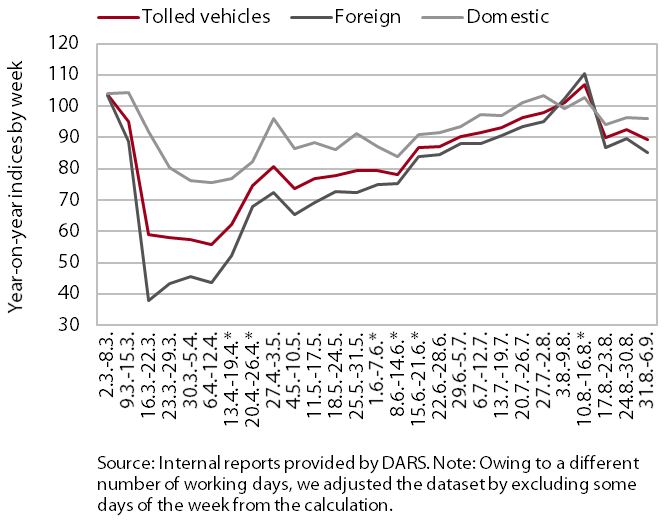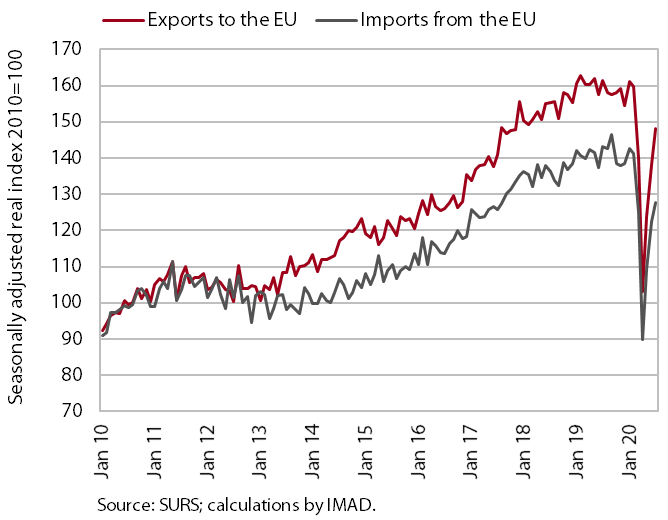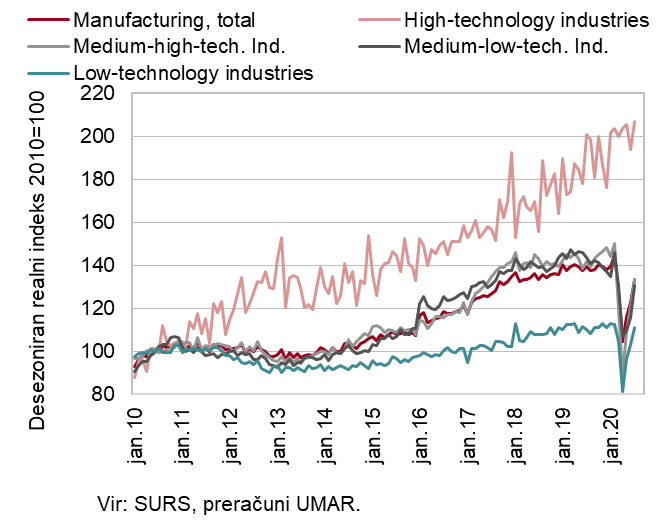Charts of the Week
Current economic trends from 7 to 11 September 2020: electricity consumption, traffic of electronically tolled vehicles, exports and imports of goods and production volume in manufacturing
In July, manufacturing production and trade in goods increased for the third consecutive month, mainly under the impact of the recovery in trading partners, but remained lower than in the same period of last year. Export expectations, having improved in recent months, reached the levels from the beginning of the year in August. Freight traffic on motorways and electricity consumption were also somewhat lower year on year at the beginning of September, despite a significant improvement in the summer months.
Electricity consumption, September 2020

The relatively rapid decrease in the year-on-year decline in electricity consumption until mid-August has slowed down in recent weeks. After weekly consumption was 9% lower year on year on average in August, the decline narrowed to 6% at the beginning of September. Among Slovenia’s most important trading partners, Austria, Italy and Croatia recorded somewhat larger declines (between 7% and 8%), while the decline in France and Germany was smaller, at only 3% and 1% respectively.
Traffic of electronically tolled vehicles on Slovenian motorways, September 2020

At the beginning of September, freight traffic on Slovenian motorways was still a tenth lower than before the epidemic. After a significant decline with the declaration of the epidemic, freight traffic increased more strongly again from the middle of June. By mid-August it was already 6% higher year on year (adjusted for holidays). Then it declined again and was 11% below the comparable 2019 level in the first week of September. The number of kilometres travelled by foreign hauliers dropped more (by 15%) than that travelled by domestic hauliers (by 4%).
Exports and imports of goods, July 2020

Goods trade continued to recover in July. After a sharp decline, exports, especially to EU countries, increased at the monthly level from May to July amid a gradual recovery of activity in some of Slovenia’s main trading partners (particularly Germany). Exports to the EU were nevertheless still around 8% lower year on year in July. The recovery was recorded for most main product groups (except oil and oil products ), but exports of products related to the car industry were nevertheless still significantly lower than in the same period of last year. Since the lifting of containment measures and with a rebound in manufacturing, imports have also increased again, but they have also remained significantly lower year on year. This is particularly the case for imports of intermediate goods, which were (excluding oil and oil products) more than 15% lower than in the same period of last year. Export expectations have improved in recent months, reaching the levels from the beginning of the year in August. The indicator of new export orders improved as well.
Production volume in manufacturing, July 2020

Manufacturing production again rose significantly in July. With the resumption of production amid the easing of measures in Slovenia and abroad, production increased more strongly in medium-high-technology industries (motor vehicle manufacturing), which had recorded the largest declines during the epidemic. The recovery of medium-low-technology industries, which mainly produce intermediate goods, accelerated in July under the impact of a further recovery in production in trading partners. Production in high-technology industries, which had not declined during the epidemic, remained at a high level, with both ICT manufacturing and pharmaceutical production being higher year on year after seven months. Production in other industries fell below the the level of 2019 during this period, on average by around a tenth.
